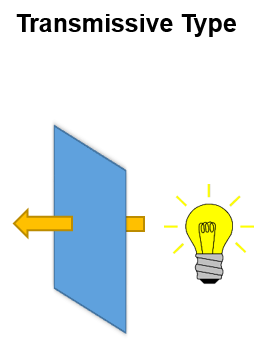Written by Peter Such, Business Development Manager (Germany) at New Vision Display, Inc.
“Reflective”, “transmissive” and “transflective” are terms often used in connection with liquid crystal display (LCD) technology. They describe the ways in which LCD display modules are illuminated. In contrast to the emissive display technologies, like OLED displays (organic light emitting diode) and VFDs (vacuum fluorescence displays), LCDs require a light source such as the sun, or artificial room light, or an integrated backlight, which is typically lit by LED (light emitting diode) semiconductors.
The mode of operation when light from a backlight passes through the LCD glass is called transmissive. The LCD glass or LCD panel functions as an “optical switch” where light from the backlight passes through the LCD cell depending on the orientation of liquid crystal molecules. The orientation can be “switched” on or off by an electrical field. Backlights produce a lot of light, making the display content very bright. The negative side to using backlights is that they require significant amount of energy within an LCD display module, especially because the backlight is required to be on all the time even if there’s no content showing on the display. In direct sunlight, a transmissive LCD screen can become ‘washed-out’ if the sunlight overpowers the luminance of the backlight. Strong enough backlights to maintain sufficient contrast in direct sunlight — such as in aviation displays — are not compatible with requirements of portable devices.
Source: https://goo.gl/YAt8sv

No comments:
Post a Comment